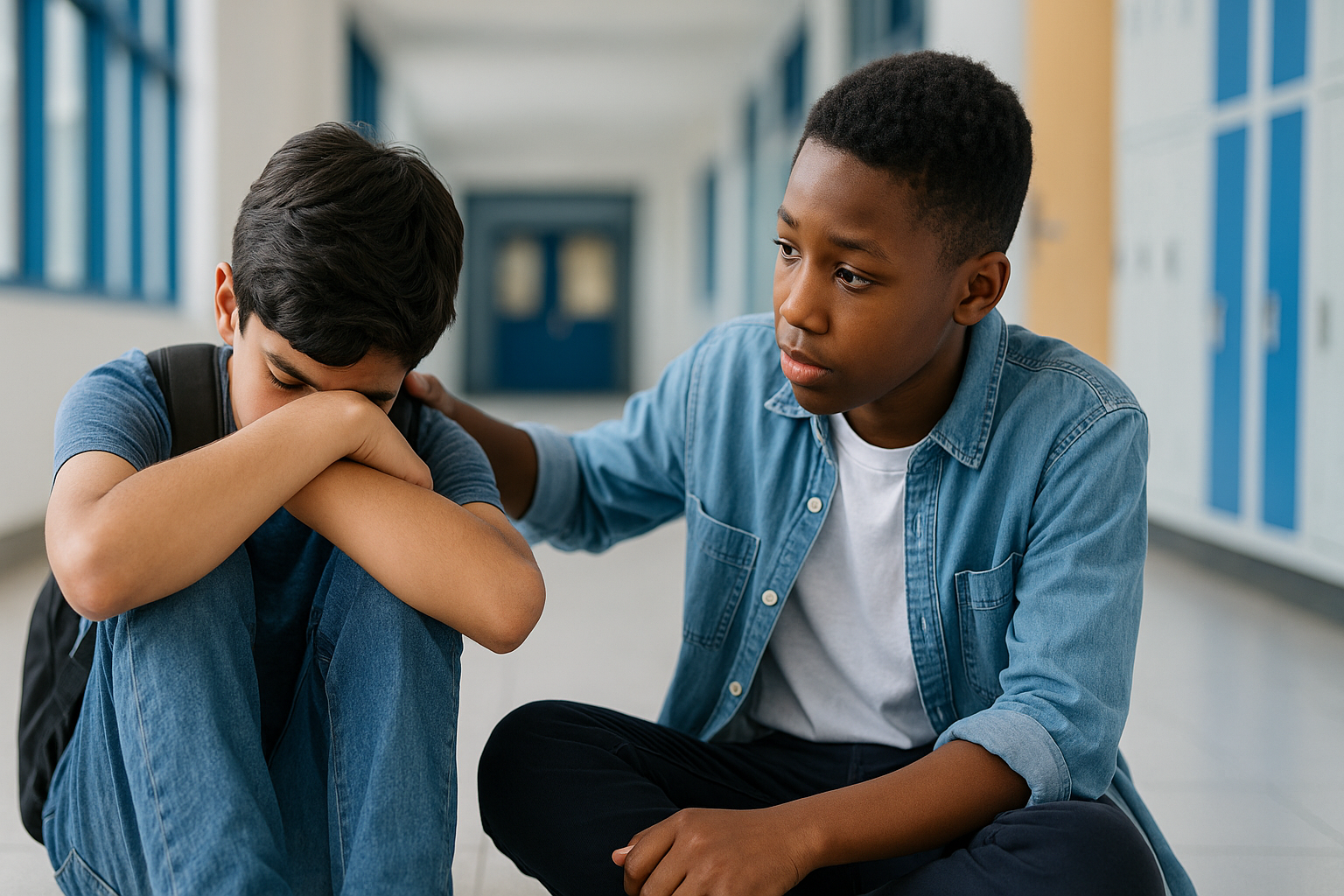Every year, about 1 in 5 students ages 12 to 18 in the U.S. reports being bullied at school. The numbers are serious. But the real issue isn’t just bullying. It’s disrespect, and the loss of discipline behind it.
Parent Insight
Many families discover that learning self-control and respect through martial arts is one of the most effective ways to stop bullying before it starts.
See how Martial Arts IS Bullying Prevention →
Kids who bully aren’t bad. They’re undisciplined. They haven’t learned how to manage frustration, ego, or fear. So they reach for the easiest kind of power they can find: putting someone else down. It is not strength. It is instability.
Disrespect Is a Lack of Discipline
Respect isn’t a personality trait. It is a skill, and it takes practice. When you train discipline, you build the ability to stop, breathe, think, and choose a better response. Bullies act without that pause. They react. They grab at power.
That is why punishment often doesn’t work. You can’t suspend disrespect out of someone. You teach them structure. You show them that strength is being steady when someone else tries to shake you.
“You can’t suspend disrespect out of someone. You teach them discipline.”
Research shows that martial arts training reduces aggression and builds emotional stability. In fact, achieving a Black Belt is one of the best things your child can do to end bullying. Students in martial arts learn that composure is stronger than dominance. They learn that respect is the foundation of confidence, not a reward you give when someone earns it.
When respect becomes habit, you stop feeding disrespect. That is the discipline missing in most bullies, and the one we work to develop in our students. For parents who want to dig deeper into how this kind of training changes behavior, we’ve shared more insight on our Bullying Prevention portal.
How to Stop a Bully Without a Fight
When a student acts out or insults someone, it usually isn’t about power. It’s about control… or the lack of it. One of the main reasons that bullies lash out is because they haven’t learned how to handle embarrassment, frustration, or fear. They try to balance their own insecurity by throwing someone else off balance.
That is why the solution isn’t more fighting or louder voices. It is more discipline. The kind that teaches calm in the middle of chaos.
For the students on the receiving end, that discipline looks like Verbal Judo—the art of redirecting conflict instead of feeding it. Developed by Dr. George Thompson, Verbal Judo gives kids concrete tools to protect their dignity and keep control of the situation.
Here are the reps every student can practice:
- Pause before speaking. Take one breath. This single second of control keeps emotion from taking over.
- Acknowledge, don’t argue. A calm “I hear you” or “You done?” diffuses tension faster than any comeback.
- Deflect the insult. Use distance language: “That’s your opinion.” It signals confidence without aggression.
- Hold posture and eye contact. Physical control reinforces verbal control.
- Exit cleanly. Walk away when the goal is chaos. Ending the exchange is how you win it.
This isn’t about ignoring bullies. It is about denying them control. Students who train this kind of discipline don’t just avoid conflict; they reshape it. They show peers what strength actually looks like: calm, steady, and in control.
Strength Means Looking Out for Others
Confidence isn’t only about standing up for yourself. It is about standing up for the person who can’t. When a student steps in with calm authority, puts a hand on a friend’s shoulder, and says, “That’s not OK,” it changes the energy immediately. No drama. No fighting. Just leadership.
Real power in a school hallway is choosing respect and self-control when everyone else is losing it.
“Real strength isn’t standing above others. It’s standing up for them.”
Our goal is to create students who don’t become bullies, who know the difference between strength and control, and who help others find it too. See how our students become leaders in bullying prevention.
The Bottom Line
Bullies aren’t the enemy. They are proof of what happens when discipline and respect break down, when control turns into chaos and insecurity masks itself as power. The goal isn’t to fight them. It is to raise kids who are stronger, steadier, and smarter than that.
Students who don’t react out of fear or anger but respond with purpose. Who can take an insult without absorbing it. Who see when someone else is being mistreated and step forward, not because they have to but because it’s right.
That kind of confidence doesn’t come from lectures or punishments. It comes from training, from repetition, accountability, and learning what real respect looks like under pressure. That is what we teach at Ripple Effect Martial Arts.
Ready for your child to build that kind of strength and confidence–the kind that protects them and everyone around them? Join our Bullying Prevention Program.
Frequently Asked Questions
How does martial arts help prevent bullying?
What is Verbal Judo, and why do we teach it?
Verbal Judo is the practice of redirecting conflict with calm, respectful communication. It’s verbal self-defense that helps kids keep control in tough moments.
→ See how Verbal Judo fits into our bullying prevention programs



